An Interest-Based Homeschool Ocean Study
After our early autumn trip to the beach, Eli was immensely interested in beach life. When I found him pouring over one of our souvenir attraction maps, I knew it was wise to capitalize on his enthusiasm. =So…a quick, delight-directed ocean study started immediately.
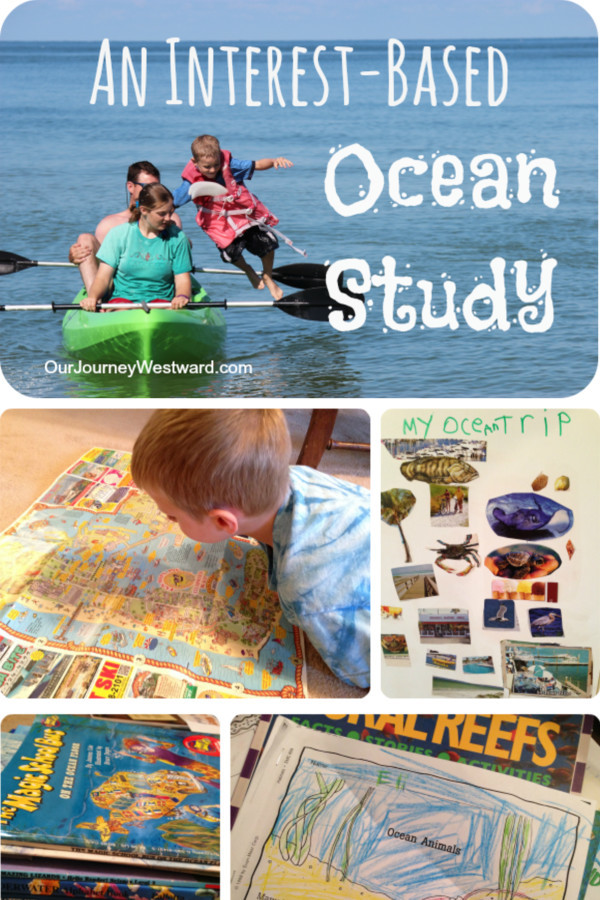
This post contains affiliate links.
Interest-Based Ocean Study Rabbit Trails
Sometimes interest-based learning is entirely built around a specific passion that a child has. Other times you take small breaks from what you’re already learning to dig a little deeper into one topic that a child shows particular interest in during the study. Small breaks are typically called rabbit trails. An entire study built around an interest is typically called interest-based learning.
In this case, the entire ocean study was built around Eli’s interest. I capitalized on the enthusiasm to present plenty of opportunities for learning and stretching his interest even further.
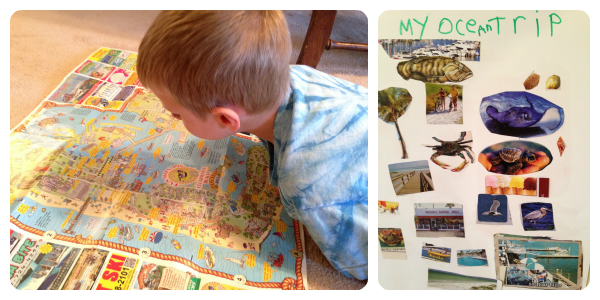
Map Skills: I just let him explore the souvenir map. We talked about things we remembered seeing, where we stayed, how far the attractions were from us, why all those businesses would be there, our favorite memories, the difference between the bay and the ocean, and more.
Collage of Memories: Rather than keeping piles and piles of brochures as souvenirs, I let Eli cut them up and create a collage of favorite memories from the trip. Casual conversations about science, geography, and culture made the lesson even better than just art and fine motor skills.
How does interest-based learning work?
Golly, any way you want really. In this instance, I just kept facilitating engaging activities as long as Eli was still excited about the topic. I had no real learning goals in mind because I’ve found letting him lead takes us way farther than my goals anyway.
Books, videos, activities, experiments, and model-making not only taught him, but they often piqued his interest towards more paths of learning.
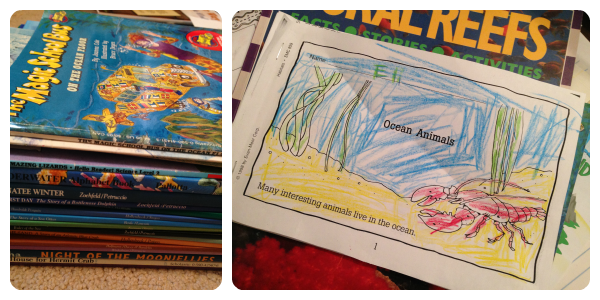
Literature: I keep a pretty well-stocked homeschool library, so I just pulled off all the books relating to oceans (see list below) and let him pick and choose what interested him at the moment. By the end of the week, we had read them all.
Extending the learning: I also keep a pretty well-stocked resource cabinet, so I browsed through it for something to give him a little extra early reading practice. I happened to find the perfect mini-book (out-of-print), but any of these ocean teaching resources would provide you with loads of activity ideas.
Independent Learning
During an interest-based study (or any study, really) I always try to find activities for my children to do that don’t require me to be alongside them. The reasons?
- They need to learn to keep themselves occupied while I work with siblings or do other things.
- One ultimate goal of homeschooling is to build independent learners.
- Most importantly, I want them to learn that they have the freedom and ability to take their own passions to a new level without my help.
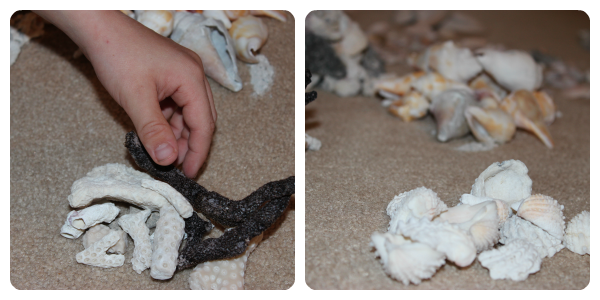
Shell Sorting: Allowing Eli free time to explore our shell collection was an independent activity I gave him while the big kids and I were working on other lessons. Sorting is a great math and science skill.
Ocean Study Rabbit Trails
The best part about interest-based learning is finding even more paths to explore than you thought you might. During our study of the ocean, Eli was asking several questions about water. Here enters a rabbit trail! I pulled Science with Kids from Usborneoff the shelf. It includes several easy experiments to learn about the properties of water. One fun afternoon later, we had delight-directed water studies under our belts, too.
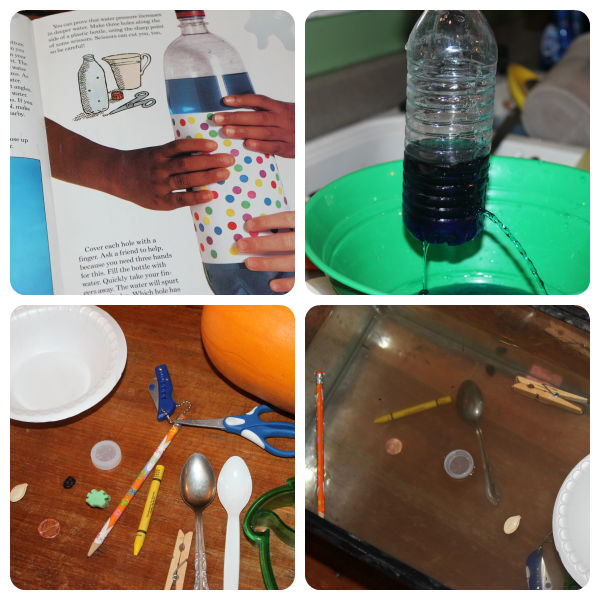
Water Pressure; Sinking and Floating
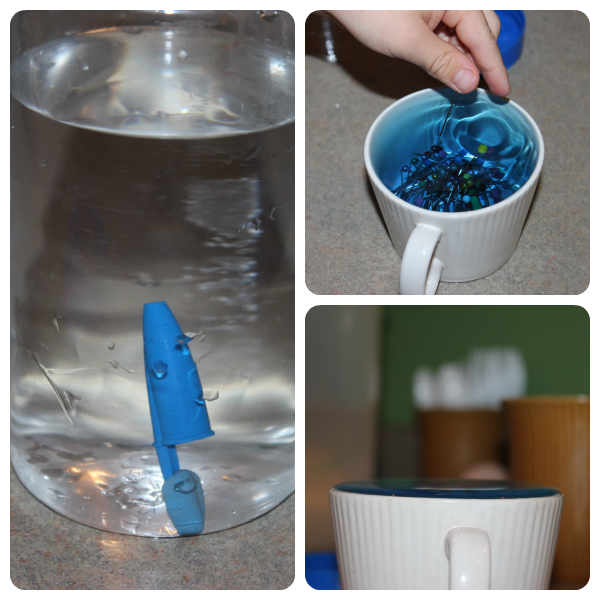
Air Pressure in Water; Surface Tension
A Natural Ending
After about a week, Eli was ready to move on from the ocean study to other topics. No problem at all. We jumped right back into our regularly scheduled plans. I hold those plans loosely because breaks for interest-based learning and rabbit trails are often the BEST learning that happens. Why? The learning is natural and enthusiastic when children are focused on things that excite them or they have questions about.
Because some of you have asked…Yes, we are still (usually) doing our regular math and language arts activities at the same time as these studies.
Do you let your children’s interests take the lead sometimes? What’s stopping you?
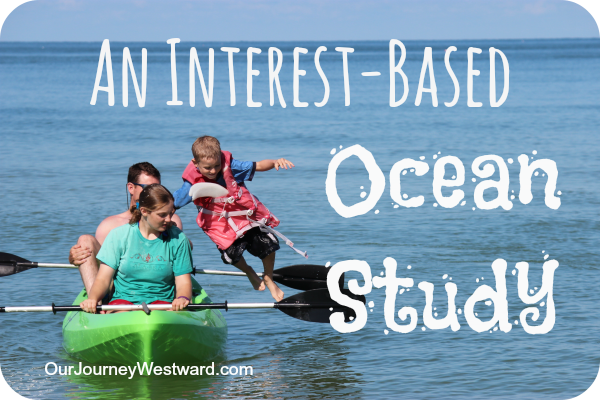
Ocean Living Literature
I love using literature in interest-based studies. Reading lots of books on the topic helps you and your kids cover many different aspects and may help you hone in on particular things you wanna study further. For instance, if you read all of the books on this list, a few different topics may grab your attention, say blue crabs and pelicans. You can then choose to dive deeper and research those two creatures in-depth. Giving an overview is great, but I love it when kids are able to choose a few specific things that they desire to learn more about. That’s one of the goals of interest-based learning!
Interest-Based Learning & Gifted Kids
Interest-based learning is a great option for many gifted children who desire to learn on their own terms. My book, Homeschooling Gifted Kids, discusses all kinds of teaching strategies that can help gifted (and even struggling) learners. If you need some encouragement and ideas, I hope you’ll check the book out!
I also taught a couple of masterclasses you might find interesting. One was on Project-Based Learning, the other was How to Plan Effective Unit Studies. Both of these discuss how cultivating children’s interests and interest-based learning promote lifelong learning.
Check out these other posts on interest-based learning:




























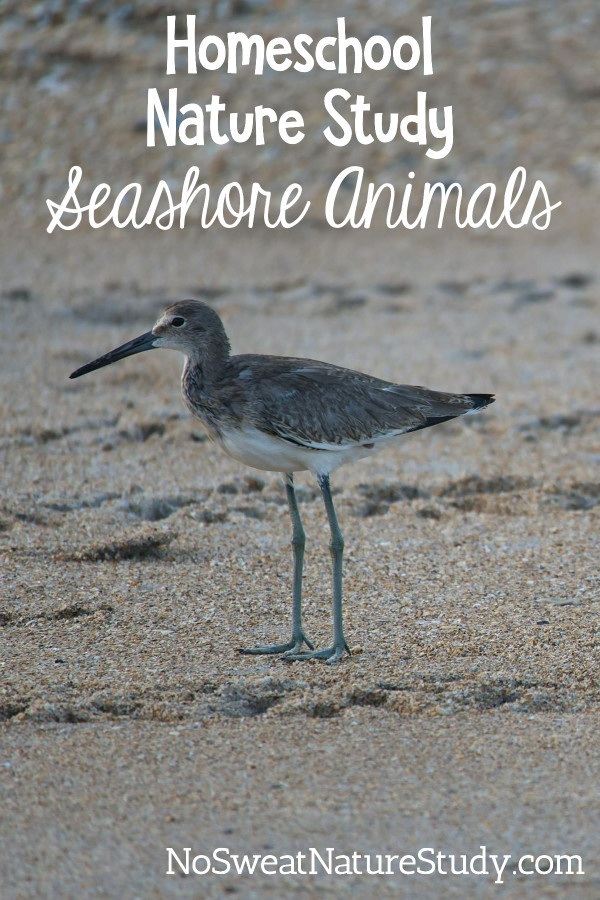
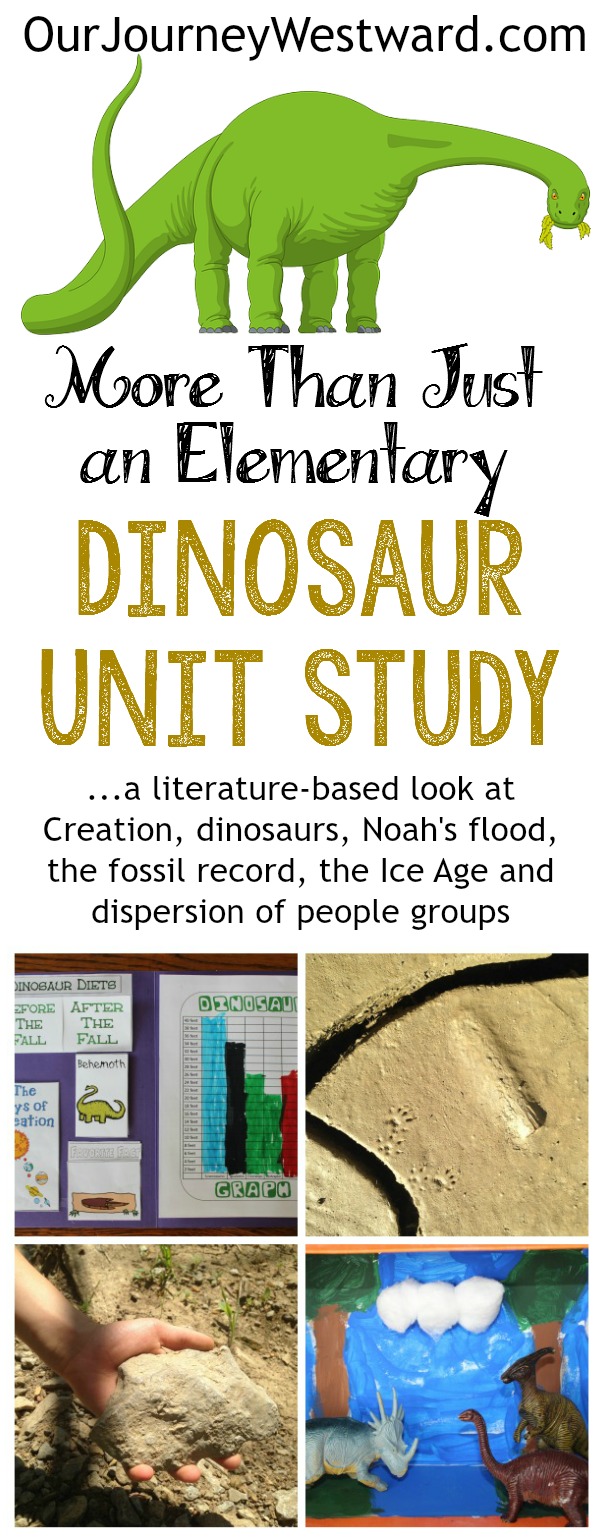

I’ve just recently started letting my children’s interests take the lead. It can be fun but also a little scary because I’m so used to being in charge of everything they learn. And it’s all or nothing with my kids. They’ll either get bored after five minutes or be obsessed for weeks…or even months!
Love! (and pinned)
I’m used to being in charge, too! It’s amazing what they do on their own with my gentle guidance, though!
Great study! Nature is my fave! (Ok.. and history… history is a fave, too.) LOVE your posts.
It’s wonderful. I wish I have library around here to visit.
Looks like lots of fun! Interest-based learning is The Best!